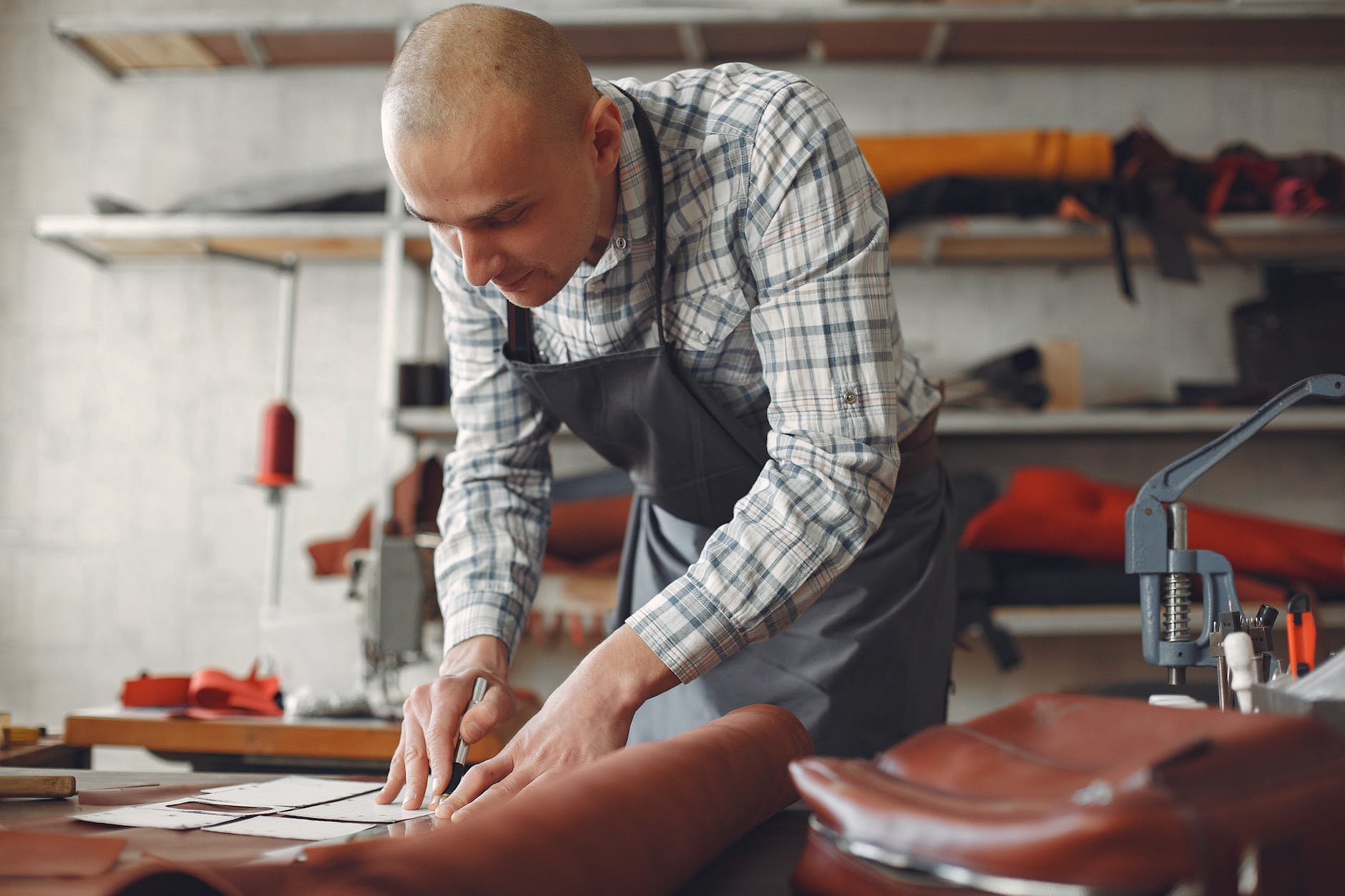The Craft of Leatherworking: Honouring Tradition with Modern Flair
The Rich History of Leather in Human Culture
For thousands of years across cultures worldwide, leather has been one of humanity’s most versatile and valuable materials. Hides and skins provide durable, flexible covering for clothing, shelter, storage, armor and more.
Archaeological evidence shows leatherworking emerged at least 5,000 years ago. Prehistoric peoples tanned hides to create protective clothing and accessories. Leather’s water resistance and strength made it invaluable for survival needs.
Over centuries, leather crafting evolved into a skilled art form. Artisans perfected specialized techniques like embossing, tooling, gilding and pleating to create status symbols and works of luxury. The material took center stage far beyond just practical use.
Despite modern innovations in textiles, leather retains unique appeal and craft heritage. When worked by hand, it still achieves singular beauty and character unmatched by any synthetic.
Common Leather Types Used in Modern Leathercraft
Leather derives from the skins of various animals, with differing properties suitable for particular uses. Most common sources include:
- Cowhide – Very durable and stiff. Ideal for shoes, bags, belts.
- Deerskin – Soft and flexible. Used for gloves, jackets.
- Sheepskin – Water resistant and insulating. Used for cold weather gear.
- Goatskin – Thin and supple. Popular for fine gloves and garments.
- Pigskin – Hard wearing and weatherproof. Used for saddles and armor.
Beyond the classics, exotics like alligator, ostrich, and stingray also get used for accessories and accents. Leather can be dressed in many ways to alter texture.
Blending Old and New Techniques
Modern leatherworkers aim to keep irreplaceable generational skills alive while pushing boundaries. New tools streamline production, freeing more time for meticulous hand finish.
Laser cutting allows consistent precision at scale impossible by hand. Programmable machinery stamps and carves motifs faster. Digital prototyping and sample previewing eliminates waste from design flaws.
This efficiency then gives time for nuanced final touches that technology cannot replicate – hand-dyed finishes, distressing, and handstitch embellishments that make each piece unique. Integrating innovations thoughtfully retains leathercraft’s appealing human essence.
Studying Heritage Motifs and Patterns
While allowing free artistic expression, many artisans study motifs passed down through generations of leatherworkers for context, inspiration, and cultural preservation. Traditional themes carry shared identity.
For example, Celtic knots reference eternity and interconnectedness in Irish leatherwork. Mexican floral tooling celebrates national pride and history. Dragons represent luck and protection across Asian leathercraft. Geometry ordered the universe across many indigenous cultures.
Heritage symbols resonate deeply when incorporated meaningfully into new works. The designs keep ancestral knowledge alive, reinterpreted by modern hands.
Sustainable Materials and Production
With growing climate consciousness, artisans increasingly aim to source hides ethically and utilize tanning processes minimizing pollution. Tradition and stewardship align.
Vegetable tanning avoids heavy metals found in modern tanning. Hand tools replace power equipment. Leather gets upcycled from pre-consumer remnants or thrifted coats. Water and waste get conserved and recycled.
The scaled-back elaborate yet mindful designs refocus leathercraft on traditional place in human culture – utilitarian artisan craftsmanship in harmony with pastoral roots and nature’s provision. Sustainable approaches reclaim leather’s enduring role.
Innovative Uses Beyond Fashion
Once solely associated with clothing and bags, modern leathercraft diversifies into experimental artworks, conceptual projects, and unexpected everyday applications.
Leather gets sculpted into modernist furniture. Unexpected leather elements accent minimalist architecture and interiors with warmth. Repurposed leather encompasses mixed media social commentary pieces. Some avant garde jewelry replaces precious metals with ethically sourced hides.
Pushing creative possibilities reveals leather’s unsuspected expressive range beyond expected accessories and garments. Blending utility and artistry expands perspectives on working with hide.
One-Of-A-Kind Custom Collaboration Pieces
For special gifts or personal mementos, clients collaborate one-on-one with artisans to create meaningful custom leather goods tailored to individual needs and tastes.
The maker sensitively translates the client’s cherished symbols, stories, and aesthetic vision into reality through leather’s sculptural versatility. Classic heirloom techniques gain modern relevance when shaped by meaningful personalization.
This intimate creative exchange bridges dedication and imagination. Together, client and artisan shape new things distinguished by purpose. The process honors leathercraft’s enduring role fostering human bonds.
Teaching Sustainability Through Workshops
Many veteran leatherworkers feel responsibility to pass knowledge sustainably by teaching students exhaustive traditional practices emphasizing resourcefulness, repair, and waste reduction. Workshops counter mass production mindsets.
Comprehensive apprenticeships cover the full hide-to-handbag lifecycle. Tanning, toolmaking, and fiber skills supplement finishing techniques to create holistic understanding. Mending and recycling methods maximize usable life of pieces.
This return to hands-on full spectrum training reawakens reverence for materials by revealing the skill and time invested in each item. When understood deeply, good stewardship follows.
Embracing Imperfections and Natural Variability
Whereas mass manufacturing pursues flawless standardization, much contemporary leathercraft celebrates imperfections as markers of handcrafted character and unique natural origins.
Makers allow scars, wrinkles, asymmetry, parasites holes, neck wrinkles, and grain variation to enhance beauty. No two hides get treated identically. Finished goods proudly bear these subtleties.
This shift reframes perfectionism into deep appreciation for ecological diversity. Pieces feel alive, connected to their source. The story gets woven into the leather itself through choices mindful of its essence.
Small Batch Production With Artisan Flair
Carefully designed small batches allow some crafters to bridge handmade qualities with economies of scale. This preserves human dedication through strategic mechanization.
Key steps get voiced for product consistency. Computer-aided pattern cutting adds efficiency. But craftspeople retain control over ornamental tooling, finishing, and quality control. Their skills focus where they truly enrich results.
Blending old world and cutting edge, the thoughtful approach keeps beloved traditions alive in products more can own and cherish while upholding artisanal dignity and purpose.
Through respectful integration of efficient technology, sustainable practices, and modern creative perspectives within traditional frameworks, today’s leatherworkers innovate purposeful new pathways for their venerable craft to progress. While honoring inherited wisdom, they compellingly renew cultural arts as relevant in contemporary life. With equal parts skill, imagination, care, and responsibility, leather’s noble legacy perseveres.
